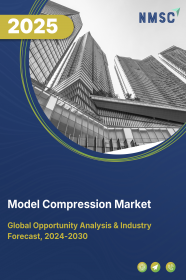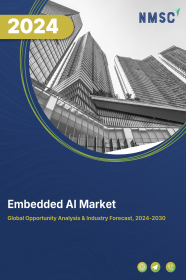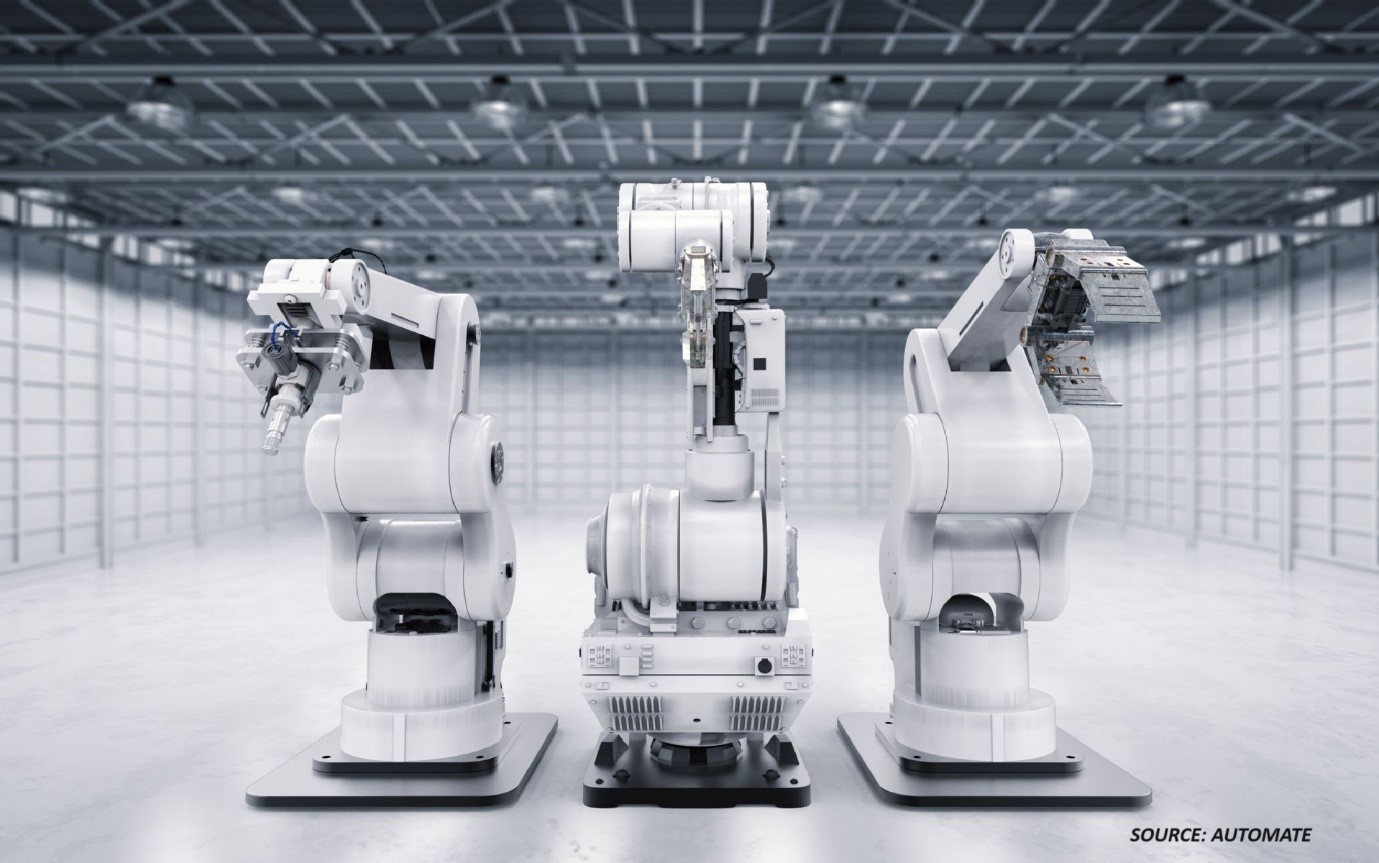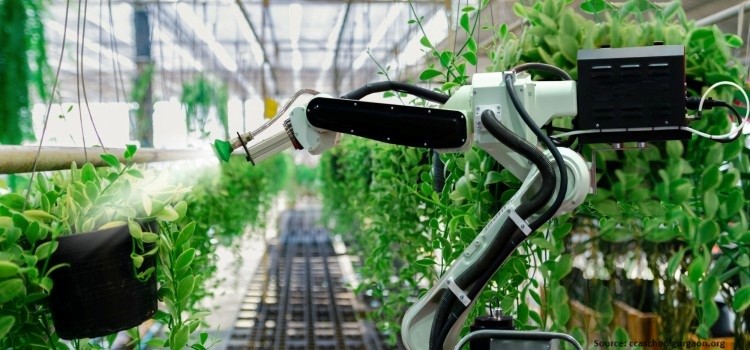
Artificial Intelligence Robots Market by Offering (Software and Hardware), by Type (Service Robots and Industrial Robots), by Technology (Machine Learning, Computer Vision, Context Awareness, and Natural Language Processing), by Deployment Mode (Cloud and On-Premises), by Application (Military & Defense, Law Enforcement, Personal Assistance & Care Giving, Public Relations, Education and Entertainment, Industrial, Healthcare Assistance, and Others) – Global Opportunity Analysis and Industry Forecast 2022-2030
AI Robots Market Overview
The Artificial Intelligence (AI) Robots Market size was valued at USD 6.86 billion in 2021 and is predicted to reach USD 77.73 billion by 2030 at a CAGR of 26.5% from 2022-2030.
An artificial intelligence (AI) robot is a type of robot that is capable of intelligent behavior. This means that the robot can make decisions and take actions based on its own internal programming and sensory input from its environment. AI robots are often designed to be able to interact with humans, either by responding to commands or by initiating interactions on their own.
These robots can handle the complexity of massive data, provide high accuracy, and quick processing solutions to advance science and technology. There is a growing demand for artificial intelligence in robotics owing to automation in the manufacturing, automotive, and industrial sectors. Companies are assessing the long-term income potential to complete repetitive jobs more effectively and autonomously.
The industry is expanding quickly as a result of advancements in machine learning, artificial intelligence, adaptive computing, and vision systems. Intelligent mobile robots of the latest generation perform duties including participating in product manufacture & assembly, transport, and loading & unloading of components in warehouses, as well as testing and validating finished products, using real-time, closed-loop controls.
Ongoing Automation and Integration of Robots for Industrial Work
Industrial robots' use in collaborative environments is developing considerably. Industrial robotics technology is quickly adopting machine learning (ML) and artificial intelligence (AI) capabilities to increase productivity; manufacturers are striving to improve upon the rigid, inflexible capabilities of ordinary industrial robots. AI robots increase efficiency and precision to prevent costly downtime as they can perform dangerous or repetitive activities required for manufacturing operations with a high degree of accuracy.
Industrial robots are replacing human labor in the manufacturing sector. This has lowered hazards and enhanced quality associated with risky tasks and decreased operational costs overall. Automation technologies are becoming essential due to an increase in higher labor costs. Robots assist in completing repetitive activities faster and more consistently than humans. Hence, we can conclude that automation of industries through the adoption of robots is going to shape the future of work environments in every prominent sector.
Integration of Smart Technologies to Enhance the Quality of AI Robots
The integration of computer vision in robotics is changing the aspects of robots to act more precisely and efficiently. Computer vision uplifts the quality of robots as it is equipped with sensors, image processing, object recognition, and decision-making that enable them to interact with their environment in a more intelligent and flexible way. The goal of integrating computer vision with AI is to create a visual perception model that can comprehend a scenario, finish the task without assistance from a human, and draw accurate conclusions.
Industrial robots have advanced significantly as a result of computer vision as it increases the power and accuracy of cameras in severe industrial conditions. Without computer vision, the robot would be completely blind. Until it is reprogrammed, it would only be able to perform the same duty exactly the same number of times. Additionally, deep learning, AI, and machine vision systems allow robots to work more quickly on the assembly line and in brand-new settings such as hospitals, supermarkets, and restaurants.
Incorporating computer vision into robot systems can enhance interoperability with human interactions in the factory as well as the system's capabilities. Large warehouse inventories are managed by artificial robots using computer vision. In numerous industries, the use of computer vision robot is growing. Companies are aiming for easily programmable robots with sophisticated vision systems as they enable a wider range of skills and require less programming.
The Risk of Data Theft Associated with Networked and Autonomous Robots Restrains the Market
Robots are now becoming networked due to the adoption of cloud computing to store and access data. This can be useful for robots that need to operate in large or complex environments, where it would be impractical to store all of the necessary data on the robot itself. However, there is a major concern about data theft and malicious attacks on cloud computing that could lead to losing sensitive data.
Additionally, the worldwide military and defense industry has begun to view AI-based robots as an essential component of any military fleet. There have been numerous occurrences that have resulted in severe injuries and disastrous effects, including the needless loss of human lives. Accidents are inevitable, but those brought on by malicious attacks pose a particularly difficult problem. This includes intentionally taking over and manipulating robots, which results in significant financial and economic losses. The primary security flaws, hazards, and attacks specific to the robotics industry, as well as their implication hamper the AI robots market growth.
Introduction of Industry 4.0
Automation enables firms to concentrate on crucial operations, energy use, and safety by decreasing the need for human labor in redundant and risky procedures. A high degree of productivity is required to meet the urgent need for high-end, accurate products that are being created by the multiple technological advances that impact sectors to improve and enhance productivity in terms of minimizing errors and working accurately.
Through technologies such as AI, 5G, advanced automation, sensors, and many others that have dramatically changed how many businesses work and how their processes are carried out, Industry 4.0 and automation are currently taking shape. Industry 4.0 & automation strongly emphasizes efficiency and optimization while drastically lowering the likelihood of errors. An automated platform can drastically lower the margin of error in a manual operation, where it can be up to 10% when humans perform the work. The goal of Industry 4.0 is to create a more intelligent, connected, and flexible manufacturing environment that can respond quickly to changing customer demands and market conditions.
Asia Pacific is Projected to Dominate the AI Robot Industry
Owing to the use of AI robots in countries such as Japan and China for surveillance, investigation, and unauthorized access detection in public places including railway stations and airports foster the AI robots market share in this region. For instance, in October 2021, Kansai Airport in Japan deployed two AI robots to autonomously navigate and patrol routes using onboard cameras and laser sensors to identify locations and capture images.
Moreover, expanding the use of AI robots for services in corporate offices of countries such as South Korea and Japan is further bolstering the market growth. For instance, in June 2022, Samsung announced a collaboration with Naver Cloud to launch a 5G cloud-based AI robot called Rookie in South Korea. It will perform delivery services of products such as coffees and lunch boxes to Naver’s employees in Naver headquarters in Korea.
North America Witnessed Substantial Growth in the AI Robot Market
Several initiatives are taken by the government in this region that increase the adoption of the Industry 4.0 model to develop smart factories that integrate IoT and AI robots in production facilities and operations. For instance, in September 2020, the U.S. Government announced an investment of 1 billion USD in Industry 4.0. Through this massive investment, the government aims to establish 12 new research and development hubs for AI and quantum information science (QIS) nationwide.
Moreover, the presence of prominent market players such as Microsoft Corporation, Alphabet Corporation, iRobot, and Amazon Inc. further boosts the market growth in this region. For instance, in September 2021, Amazon launched a household AI robot for everyday tasks such as home monitoring, setting up routines &reminders, and playing music &TV shows. This AI robot from Amazon is called Astro and is priced at 999 USD.
Competitive Landscape
Various market players that operate in the AI robots industry include IBM, Intel, Microsoft, NVIDIA, Softbank, ABB Ltd., FANUC, Kuka AG, Xilinx, Hanson Robotics, and others. These market players are adopting various strategies such as partnerships, joint ventures, and product launches across various regions to maintain their dominance in the AI robots market. For instance, in July 2022, Starship Technologies collaborated with Bedford Borough Council in England to deliver groceries using Starship’s AI robots to 45,000 residents across 20,000 households in Bedford.
Moreover, in October 2020, Nvidia launched an entry-level AI and Robotics developer kit for USD 59 with free online training and certification for students, educators and robotics hobbyists called Nvidia Jetson Nano 2GB. It provided a scalable platform for learning and creating AI applications and can run a diverse set of AI models and frameworks. In addition, in September 2022, NetDragonWebsoft, a Chinese gaming company integrated an AI-based humanoid robot ‘Tang Yu’ to handle the organizational and operational aspects of the company. The humanoid robot will contribute to making the risk management system more efficient.
Artificial Intelligence Robots Market Key Segments
By Offering
-
Software
-
AI Platform
-
AI Solutions
-
-
Hardware
-
Processors
-
Storage Devices
-
Network Devices
-
By Type
-
Service robots
-
Ground
-
Aerial
-
Underwater
-
-
Industrial robots
-
Traditional Industrial Robots
-
Articulated robots
-
SCARA robots
-
Parallel robots
-
Cartesian robots
-
Other robots
-
-
-
Collaborative Industrial Robots
By Technology
-
Machine Learning
-
Computer Vision
-
Context Awareness
-
Natural Language Processing
By Deployment
-
Cloud
-
On-premises
By Application
-
Military & defence
-
Surveillance
-
Search and Rescue
-
Border Security
-
Combat Operations
-
-
Law enforcement
-
Road Petrolling
-
Riot Control
-
-
Personal assistance and care giving
-
Elderly Assistance
-
Companionship
-
Security and Surveillance
-
-
Public relations
-
Reception Care at Commercial Places
-
Tour Guidance
-
-
Education and Entertainment
-
Education
-
Entertainment
-
-
Industrial
-
Healthcare assistance
-
Others
By Geography
-
North America
-
The U.S.
-
Canada
-
Mexico
-
-
Europe
-
UK
-
Germany
-
France
-
Spain
-
Italy
-
Netherlands
-
Denmark
-
Finland
-
Norway
-
Sweden
-
Russia
-
Rest of Europe
-
-
Asia-Pacific
-
China
-
Japan
-
India
-
Australia
-
South Korea
-
Thailand
-
Singapore
-
Rest of Asia-Pacific
-
-
RoW
-
Latin America
-
Middle East
-
Africa
-
Key Players
-
IBM
-
Intel
-
Microsoft
-
NVIDIA
-
Softbank
-
ABB Ltd.
-
Fanuk Corp
-
Kuka AG
-
Xilinx
-
Hanson Robotics
REPORT SCOPE AND SEGMENTATION:
|
Parameters |
Details |
|
Market Size in 2022 |
USD 9.39 Billion |
|
Revenue Forecast in 2030 |
USD 77.73 Billion |
|
Growth Rate |
CAGR of 26.5% from 2022 to 2030 |
|
Analysis Period |
2021–2030 |
|
Base Year Considered |
2021 |
|
Forecast Period |
2022–2030 |
|
Market Size Estimation |
Billion (USD) |
|
Growth Factors |
Ongoing automation and integration of robots for industrial work Integration of smart technologies to enhance the quality of AI robots |
|
Countries Covered |
26 |
|
Companies Profiled |
10 |
|
Market Share |
Available for 10 companies |
|
Customization Scope |
Free customization (equivalent up to 80 analysts working hours) after purchase. Addition or alteration to country, regional & segment scope. |
|
Pricing and Purchase Options |
Avail customized purchase options to meet your exact research needs. |

















 Speak to Our Analyst
Speak to Our Analyst





















